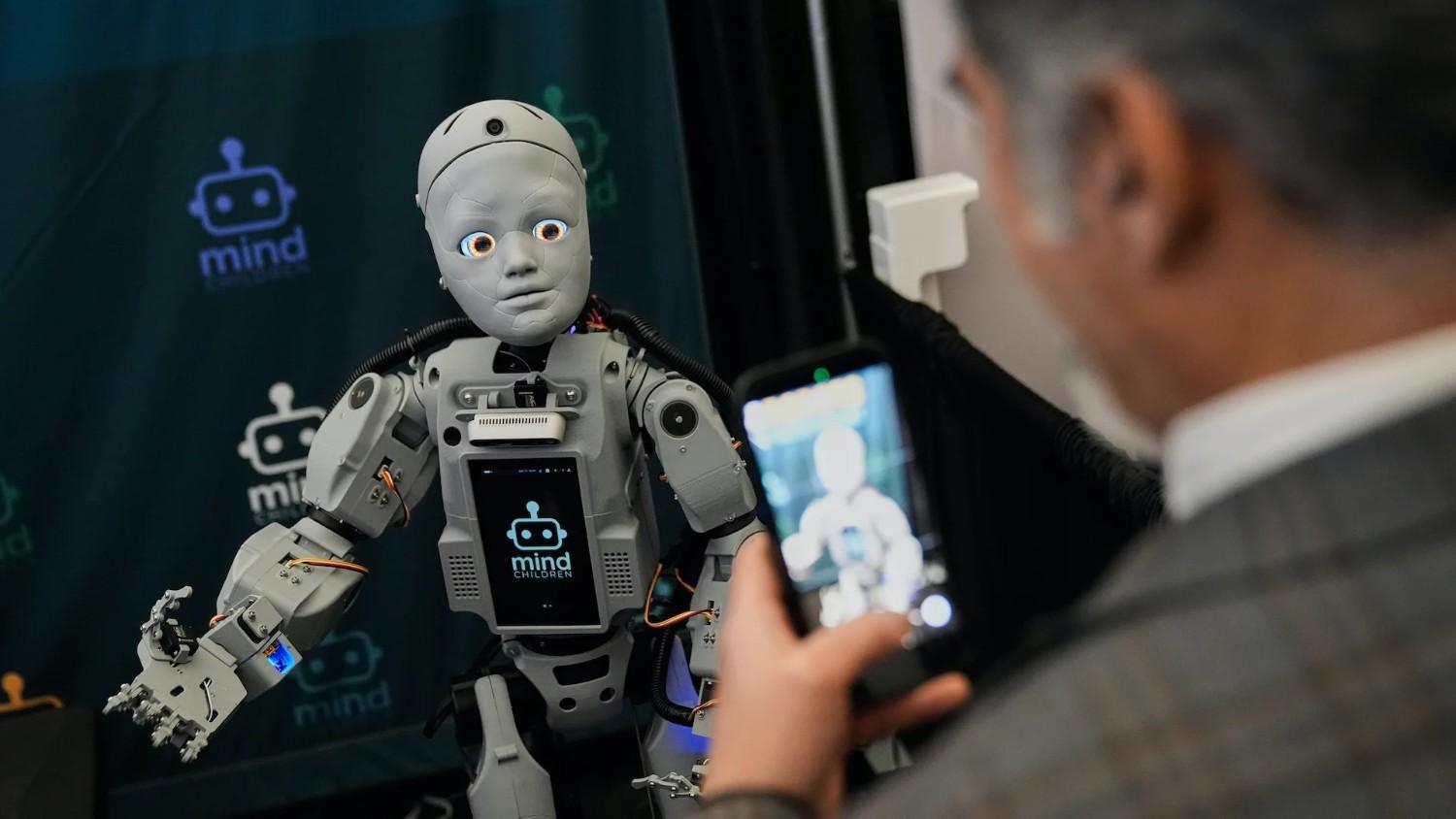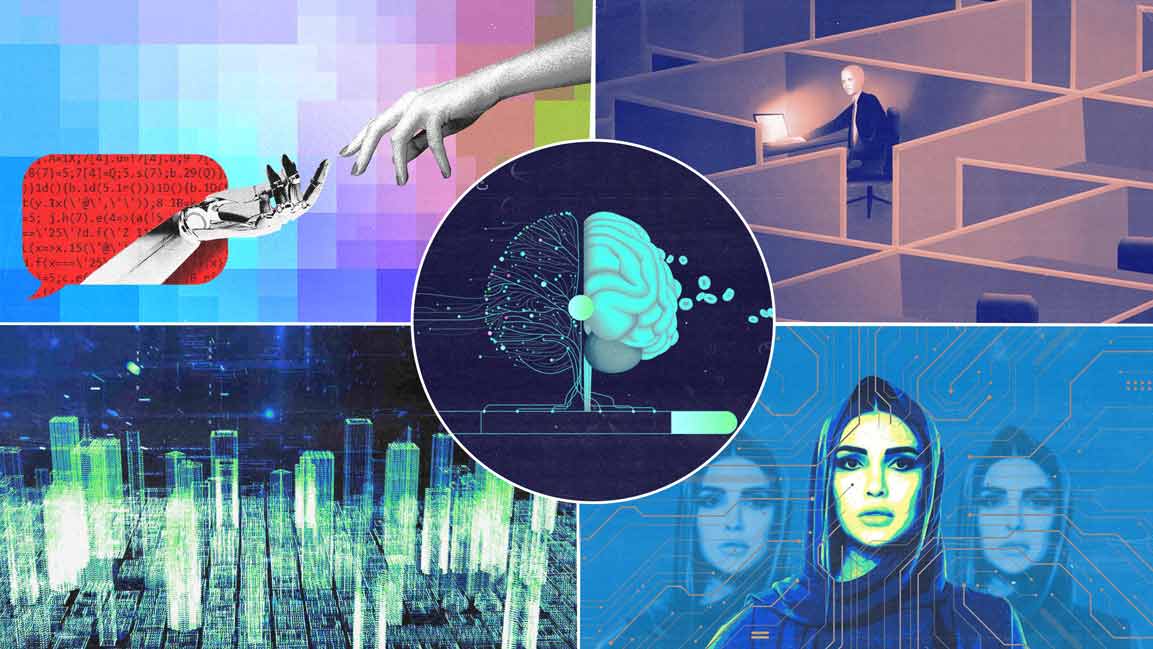- | 8:00 am
Pi, Woebot, and Personal.ai: Meet ChatGPT’s new AI rivals
These new AI assistant bots are more focused on personal help than on writing or performing other tasks for you.

This article is republished with permission from Wonder Tools, a newsletter that helps you discover the most useful sites and apps. Subscribe here.
Beyond ChatGPT, a new category of AI assistants is emerging. Pi, Poe, Personal.ai, and Woebot are personal AI chatbots. Unlike ChatGPT, Claude, and Bard, which I’ve written about recently, these new AI assistant bots are more focused on personal help than on writing or performing other tasks for you. Read on for how I’ve found these bots useful and for some suggestions for using them creatively.
PI AIMS TO BE YOUR NEW AI CONVERSATION PARTNER
Pi is a free personal bot that gets to know you over time. After signing up for free at Pi.ai, you can chat with Pi through its site or app, or on WhatsApp.
It’s a friendly chat companion you can use as a sounding board for thoughts or questions. You can also use it to remember things that you’re afraid you might forget.
THREE WAYS TO USE PI
- Organize your thinking: Ask Pi to guide you through journaling or planning out a project. It will nudge you forward step by step.
- Prepare for a conversation: Pi can help you practice for an interview or get ready for a difficult discussion with a friend or colleague. It’s neutral and nonjudgmental, so it works well for simulations.
- Consider a new challenge: Ask Pi to help you think through a question you’re reflecting on or a decision you’re trying to make. You’re the one generating the input—Pi just prompts you with helpful questions.
HOW PI DIFFERS FROM CHATGPT
Unlike ChatGPT and Claude, Pi isn’t designed to generate writing or Twitter threads for you. Nor will it write poems about sandwiches in the style of Shakespeare. Instead, it’s conversational and programmed to stick with you over time.
CAVEATS
Pi sometimes attributes things to you that you haven’t actually said. When I asked it to help me plan a project, the bot invented a task I hadn’t mentioned. And it claims capabilities it doesn’t have.
ALTERNATIVES TO PI
Personal.ai is a new bot that you can train on your own writings, documents you upload, or material you type or paste in. You can even feed it links or Google Drive documents. This makes it easier and faster to train than services like Pi.
The bot can then act as your digital assistant, drawing on what you’ve given it to assist with questions or projects. It can draft email responses based on your prior writing.
Unlike Bard, ChatGPT, Claude, and other bots whose responses stem from generic web material, Personal.ai learns your favorite insights, quotes, or other knowledge.
ChatGPT or Claude will interact with only a couple of documents at a time. And they’ll start chats over after a limited number of queries. Your Personal.ai bot, on the other hand, can retain insights from documents you upload over time. That means it can accumulate a robust understanding of your work if you train it to do so. Check the privacy commitment to see if it resonates for you. Personal.ai works online or in dedicated apps for iOS and Mac.
A few caveats:
- The interface is more confusing than ChatGPT and other bots I’ve tested.
- Personal.ai’s design emphasizes using your AI to respond to other people’s questions, which may not be its most useful capability. To me, Personal.ai could be more valuable for querying your own past notes and writings.
- While it’s free for basic usage, pricing rises to $40 per month if you want more than two AI personas or if you want to integrate more than just Google Drive files.
WOEBOT HELPS YOU PUT YOUR WORRIES INTO WORDS
Woebot is a personal bot designed specifically to help you think through mental health challenges. It helps you name your concerns and suggests questions to consider. It’s not a replacement for a therapist, but it does give you a free tool for setting down your thoughts even if you don’t have access to costly therapy.
WHY BOTS ARE HELPFUL
Talking to a bot seemed odd to me until I tried it. Then I realized the bot basically functions as a sounding board. Having a conversation partner—even a digital one—pushes me to clarify my thoughts. It forces me to get things out of my head by putting them into words. It’s like hitting tennis shots against a wall or baseballs from a pitching machine.
Sometimes a bot has useful input, summarizing what I’ve shared or pointing out an inconsistency. But in many cases, the value of the bot is in pushing me to think through something amorphous that’s rumbling around in my brain.
AI BOTS ARE PRODUCTIVITY AIDS
My hunch is that many of us who rely on digital documents and project apps will soon add AI chatbots to our tool kits.
Just as we use tools like Google Docs to access our documents anywhere, we’ll rely on AI bots to draw on past ideas and insights.
BOTTOM LINE
In experimenting with these new AI chatbots I’ve noticed that they can already be useful in several ways:
- As a sounding board to help clarify my thoughts
- To recall details I’d otherwise have forgotten
- To alert myself to problematic assumptions or unconscious biases
- To help me brainstorm ways of getting unstuck
This article is republished with permission from Wonder Tools, a newsletter that helps you discover the most useful sites and apps. Subscribe here.








































